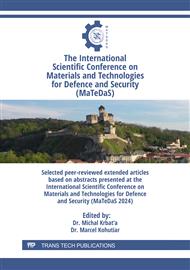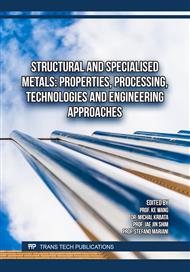p.3
p.13
p.25
p.37
p.49
p.63
p.69
p.75
Simulation and Experimental Validation of Orbital Laser Welding of Aluminum Alloy Tubes
Abstract:
This study focuses on the simulation and experimental validation of orbital laser welding for aluminum alloy tubes. The trials were conducted on the TRU LASER ROBOT 5020 system by TRUMPF, which features a 30 kg robotic arm, a diode-pumped disk laser with a beam quality of 8 mm*mrad, and a minimum output power of 4000W on the workpiece. Aluminium 6082 Tubes were mounted on a fixture attached to an integrated rotary table, and a series of tests were performed with varying levels of edge preparation accuracy and different laser beam parameters such as power and head linear speed. The simulation was carried out using Ansys Mechanical witch ACT toolkit heat source model. The thermocouple mesurments and metallographic tests was a key parameter used to validate the simulation results. The temperature distribution during welding was compared with simulation results to adjust the thermal properties of the material within the simulation model. The combined simulation and experimental analysis provide a framework for optimizing the laser welding process, enabling the reduction of costly experimental trials by simulating different parameter ranges.
Info:
Periodical:
Pages:
25-35
Citation:
Online since:
June 2025
Authors:
Price:
Сopyright:
© 2025 Trans Tech Publications Ltd. All Rights Reserved
Share:
Citation:



